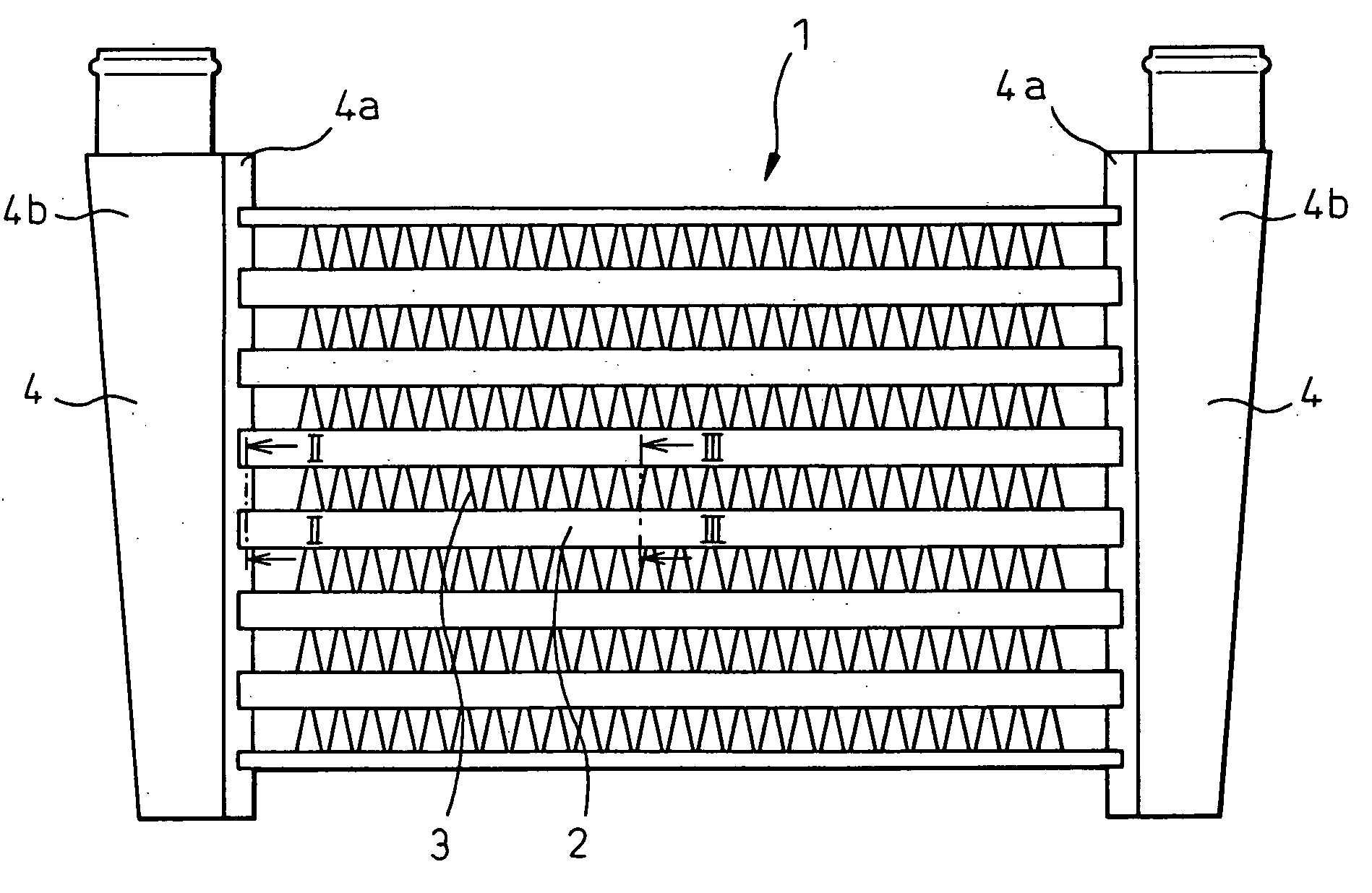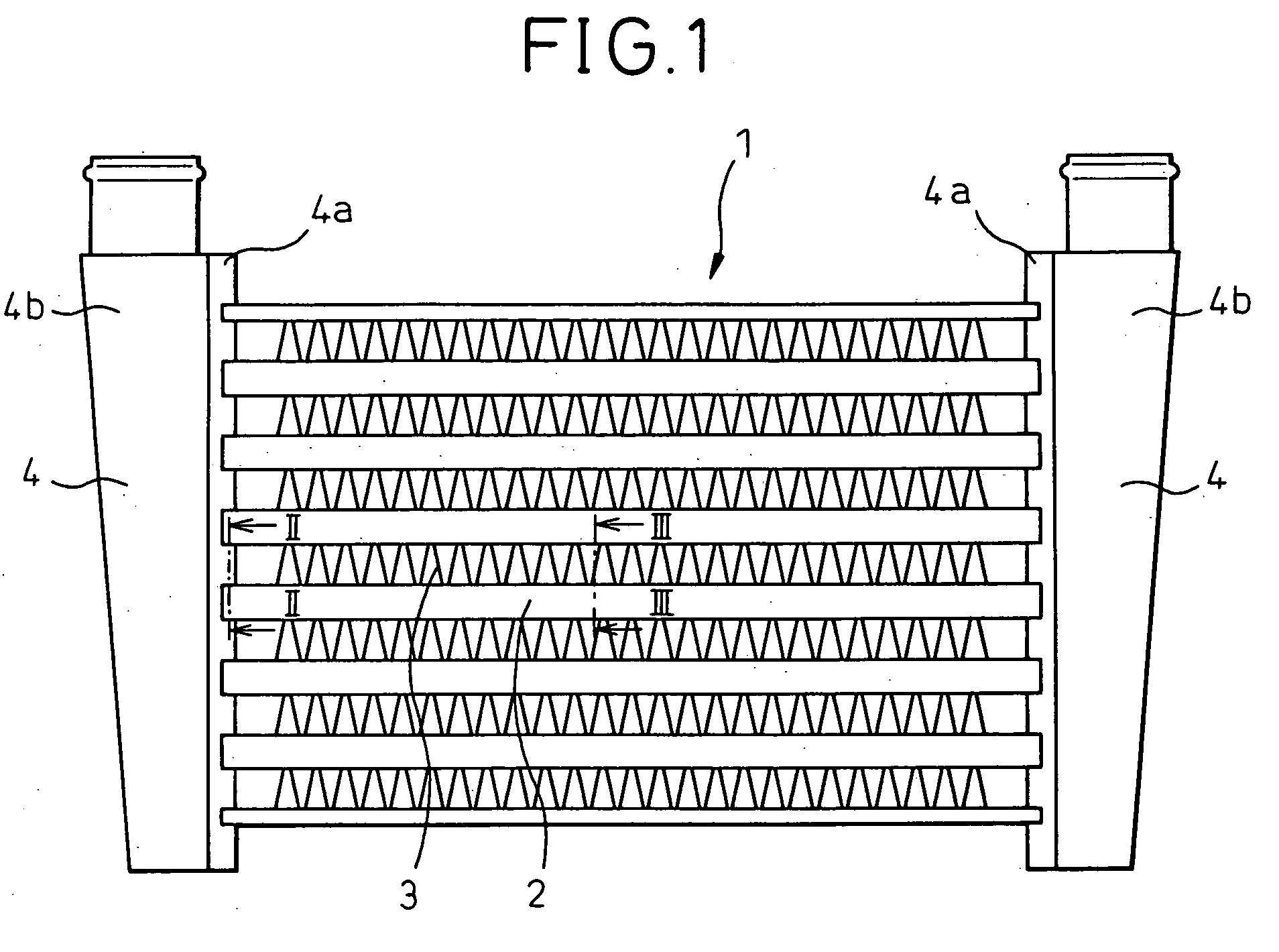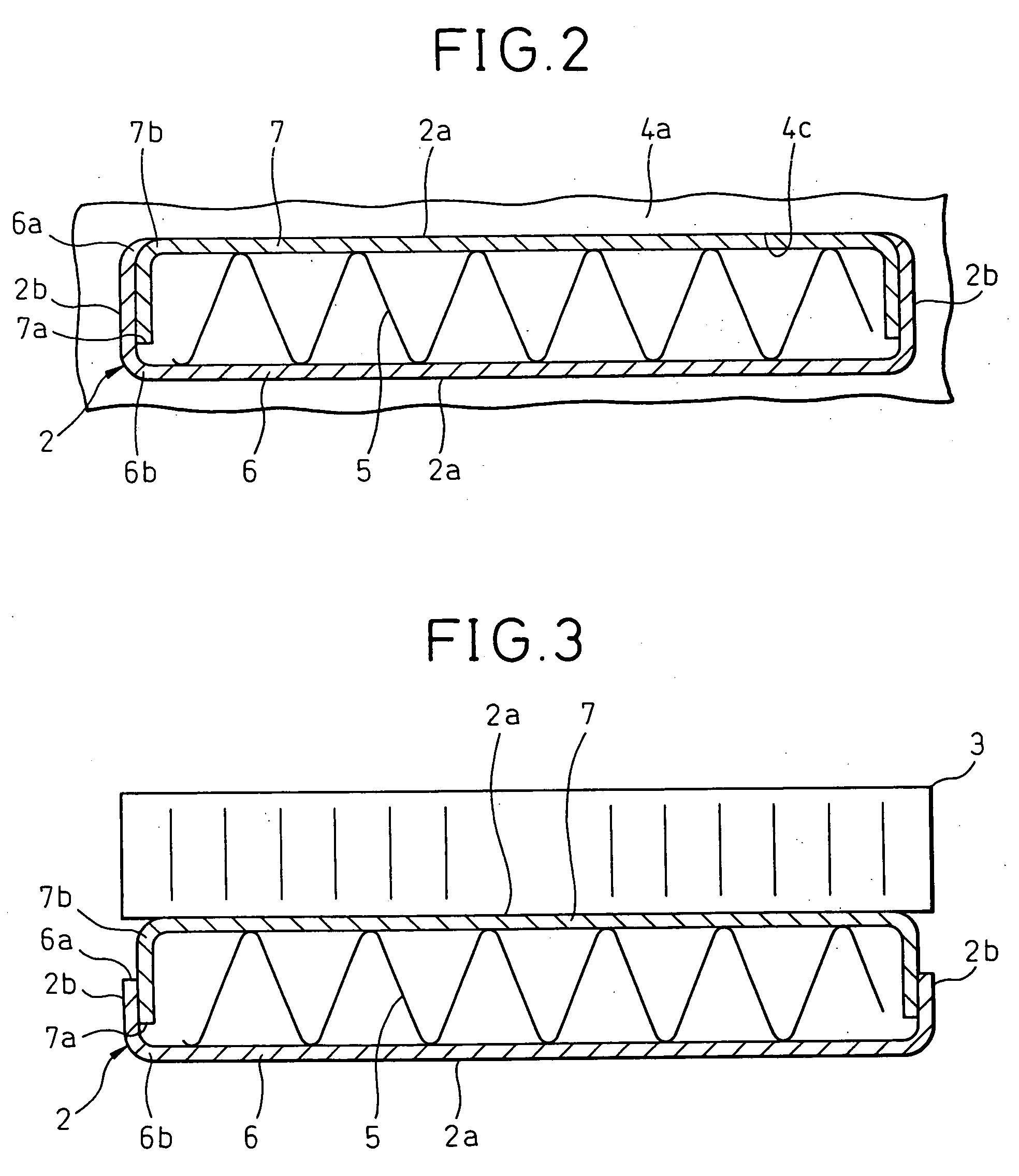Heat exchanger
a heat exchanger and fin-tube technology, applied in the direction of tubular elements, lighting and heating apparatus, stationary conduit assemblies, etc., can solve the problems of difficult repair and failure of brazing, and achieve the effect of easy repair work
- Summary
- Abstract
- Description
- Claims
- Application Information
AI Technical Summary
Benefits of technology
Problems solved by technology
Method used
Image
Examples
first embodiment
[0035]FIG. 1 is an overall arrangement view showing a heat exchanger of the first embodiment of the present invention. In this embodiment, explanations are made into an example in which the heat exchanger of the present invention is applied to an inter-cooler. In this connection, although not shown in the drawing, the inter-cooler described in the present embodiment is arranged on the downstream side of a suction air current of a supercharger which pressurizes suction air sucked into an internal combustion engine so as to cool the suction air by exchanging heat between the suction air and a cooling wind.
[0036]As shown in FIG. 1, the inter-cooler 1 is a fin-and-tube-type heat exchanger and includes: a plurality of tubes 2 arranged in parallel mutually; and outer fins 3 arranged between the tubes 2 which are adjacent mutually. The inter-cooler 1 further includes header tanks 4 arranged on both end sides in the longitudinal direction of the tubes 2. In this connection, in FIG. 1, the l...
second embodiment
[0067]FIGS. 9 and 10 are lateral sectional views showing a tube of the second embodiment of the present invention. FIG. 9 is a sectional view taken on line II-II in FIG. 1. FIG. 10 is a sectional view taken on line III-III in FIG. 1. Like reference characters are used to indicate like parts in FIGS. 2, 3, 9 and 10.
[0068]As shown in FIGS. 2 and 3, in the tube 2 of the first embodiment, the lateral cross-sectional shape is symmetrical in the lateral direction. However, as shown in FIGS. 9 and 10, in the tube 2 of the present embodiment, the lateral cross-sectional shape is not symmetrical in the lateral direction. That is, in the tube 2 of the present embodiment, on the left of the tube 2 in the drawing, in the same manner as that of the first embodiment, the first plate 6 is located outside. However, on the right of the tube 2 in the drawing, and different from the first embodiment, the second plate 7 is located outside.
[0069]In this case, only the right of the tube 2 in the drawing ...
third embodiment
[0072]FIGS. 11 and 12 are lateral sectional views of the tube of the third embodiment of the present invention. In this connection, FIG. 11 is a sectional view taken on line II-II in FIG. 1. FIG. 12 is a sectional view taken on line III-III in FIG. 1. Like reference characters are used to indicate like parts in FIGS. 2, 311 and 12.
[0073]In the present embodiment, as shown in FIGS. 11 and 12, one flat tube 2 is composed of one plate 8. Concerning this plate 8, on the side 2b of the tube 2, while the first edge portion 8a of the plate 8 is being located outside the second edge portion 8b, the first edge portion 8a side of the plate 8 and the second edge portion 8b side are put on mutually. This portion in which the first edge portion 8a side of the plate 8 and the second edge portion 8b side are put on mutually is joined by means of brazing.
[0074]This plate 8 is formed into a shape described as follows. As shown in FIG. 11, in the region C of the tube 2, the first edge portion 8a is l...
PUM
| Property | Measurement | Unit |
|---|---|---|
| distance | aaaaa | aaaaa |
| shape | aaaaa | aaaaa |
| displacement | aaaaa | aaaaa |
Abstract
Description
Claims
Application Information
 Login to View More
Login to View More - R&D
- Intellectual Property
- Life Sciences
- Materials
- Tech Scout
- Unparalleled Data Quality
- Higher Quality Content
- 60% Fewer Hallucinations
Browse by: Latest US Patents, China's latest patents, Technical Efficacy Thesaurus, Application Domain, Technology Topic, Popular Technical Reports.
© 2025 PatSnap. All rights reserved.Legal|Privacy policy|Modern Slavery Act Transparency Statement|Sitemap|About US| Contact US: help@patsnap.com



